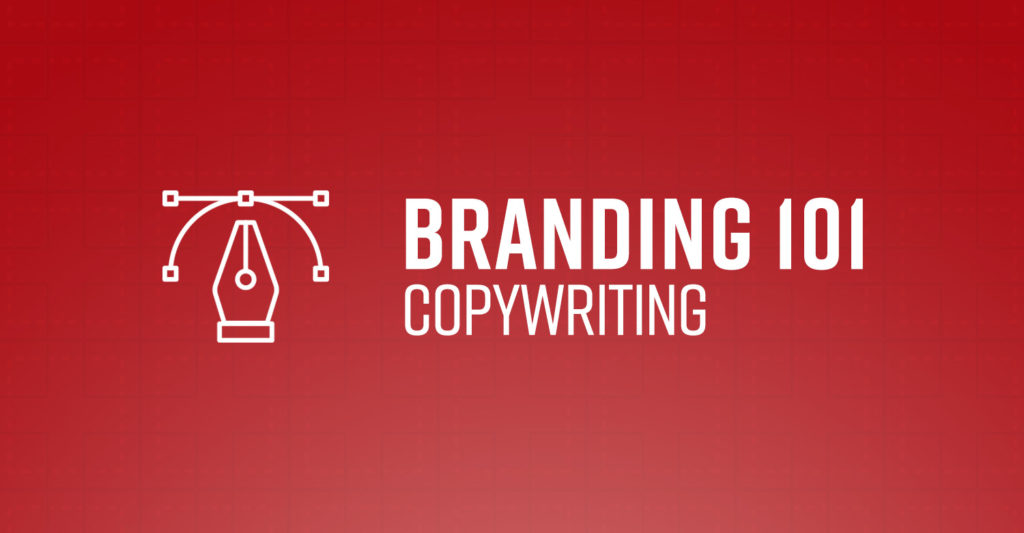It’s hardly a surprise that content on a web page can substantially delay the web design process. It’s the main contributor of hold-ups for website design projects. People end up producing fluff content, or ponder how to start the content creation process.
Content Marketing
You might be reading this article for several reasons. Perhaps a social media post that piqued your interest brought you here. Perhaps you’re conducting research on marketing and branding agencies in St. Louis for a project you’re working on. Perhaps you’re simply scrolling through headlines of interest while you’re in line at the grocery store.
It hardly matters how you got here; you’re here because you need clarity on a specific topic: copywriting.

When it comes to branding, copywriting is a powerful factor. From your brand’s foundation to the content you send out to potential customers, copywriting is mandatory. Ultimately, your copywriting’s quality defines how your brand is perceived. Let’s review some branding components that stress how important copywriting is. Continue Reading
What goes into effective and engaging website copy?
Posted on 04/06/2017While there’s an increasing emphasis on including engaging visuals and video in website design, we believe that nothing will ever take the place of well-written copy. We call content one of our four keys to a successful website.
We’ve assembled some key questions to help you establish your intentions and objectives for the copy, or written content, on your site. These questions are relevant whether your own team produces your content or you work with Hub & Spoke or another provider.
Although it might not be necessary to recreate the existing content you have, the following questions will establish a foundation, whether you are making small changes or need something entirely new. Continue Reading
Non-Profits Should Have a Social Media Communication Strategy
Posted on 03/07/2017Non-profits often use a traditional communication strategy to generate membership growth, awareness and outreach. This kind of marketing follows the tried and true model of using word-of-mouth, paper, mail, advertisement and maybe radio or public TV spots to generate brand awareness.
Unfortunately, unless a non-profit is a large player like the Sierra Club, for example, these methods don’t reach the large audience they used to. Magazine and newspaper spots are probably the most effective of these traditional tools, because at least readers get a chance to learn a thing or two with content written by the organization itself.
The Digital Strategy
However, one modern communication strategy element that is proven to generate lots of attention and activity is social media.
With a constant flow of good content, two-way engagement with followers, and a good mix of digital media, many non-profits have seen their membership grow.

The trick to developing a social media following and then converting those followers into supporters is to first have a plan. That includes determining what is the main, overarching theme to be communicated, building a schedule of content and material that will be developed within that theme’s parameters, and then dedicating resources and people to monitor and manage the account.
The plan should be flexible and able to adjust to issues happening externally as well. This allows cross-linking back and forth between current issues of the day and the messaging the non-profit wants people to hear.
Keep your posts relevant, but don’t lose the theme. Don’t assume that just because you have raised an issue once, it will stay on your followers’ minds. Soon enough, this steady flow of relevant, informative, engaging content will hopefully start generating interested readers who will share your content, so that your audience can increase exponentially.
It may sound intimidating to keep your social media posts flowing, especially if you work for a small organization, or you’re already busy all the time. One of the good things about social media, though, is that you don’t always have to have perfectly polished posts. You can simply take time to freshen your mind by letting your followers know what’s happening at your organization and make a personal connection with them.
You can ask them what they’d like to see happen with an issue you’re working on. Or, remind them that you have a big event coming up, or that you are always looking for volunteers.
Social media marketing shouldn’t be the only outreach strategy you employ, but it is becoming more and more important each day. Instead of letting this worry you, you should tackle it head-on, and develop a coherent strategy that works in consideration of the unique goals and demands of your organization’s mission.
Creating Attractive Website Content That Fosters Engagement
Posted on 12/15/2016It’s common knowledge that the average person’s attention span is increasingly short. We all live busier, faster lives than we used to live. This is especially true here on the internet, where we’re constantly bombarded by content and moving on to the next thing—whatever it is—only takes a click.

Nonetheless, people are quite willing to stick around if what they’re watching or reading is helpful and engaging, and it provides new insights and robust knowledge. This is where quality content comes in. Continue Reading
How can a small business prepare their marketing for the new year?
Posted on 11/16/2016As a new year begins, it’s a great time for small businesses to re-evaluate their marketing plan.

What worked in 2016 may not always be the best bet for 2017… and what didn’t work, well, it should be thrown overboard.
Develop a content marketing strategy that prompts action.
Make a plan that will help your content and messaging reach more people, whether that involves social media sharing, outreach to media or traditional advertising.
Consider adding video to the mix, spotlighting your products or services. 64% of visitors were more likely to buy a product after watching a video about it online, while 90% of online users say product videos help in the decision-making process.
Make sure your website is still a good fit.
We all know an outdated website design when we see it. They have cheesy graphics, lots of textures, and they just look dated. In any industry, that’s a huge turnoff. It shows your website is nothing more than an old brochure.
38% of users will stop engaging with a website that is unattractive, while 51% of users have trouble finding the contact information they need. Other times it’s not the design and layout that are the problem; instead, you just have old content that doesn’t reflect your mission, achievements or projects.
No matter what, make sure the website is mobile-friendly and easy to navigate on tablets and phones.

Update products in your online store.
It’s a new year, so make sure new products stand out, and at the very least, update how current products are presented. Create new product descriptions and add new high-resolution images to put a fresh spin on offerings. Make sure your products keep up with changing trends.
Embrace the ROI of an effective email marketing campaign.
You have an email marketing list, right? If not, you should, as they produce an ROI of $38 for every $1 spent — if used properly. Consider using detailed analytics. Track which messages are opened and by whom. How many people click through to your website, and how many take an action once there? Use this to determine if it’s time to rework the message. Emails cost very little to send, but it’s important to hone the message. Otherwise you’ll end up in the spam box. Also, like websites, make sure your email marketing is designed to work on all devices, as 75% of Google’s 1 billion email users check their mail on a mobile device.
Consider using detailed analytics. Track which messages are opened and by whom. How many people click through to your website, and how many take an action once there? Use this to determine if it’s time to rework the message. Emails cost very little to send, but it’s important to hone the message. Otherwise you’ll end up in the spam box. Also, like websites, make sure your email marketing is designed to work on all devices, as 75% of Google’s 1 billion email users check their mail on a mobile device.
Emails cost very little to send, but it’s important to hone the message. Otherwise you’ll end up in the spam box. Also, like websites, make sure your email marketing is designed to work on all devices, as 75% of Google’s 1 billion email users check their mail on a mobile device.
Build your social media presence.
Social media can be a love-hate relationship, as it doesn’t usually lead to direct sales. Rather, it creates engagement and buzz, along with back of mind awareness.
Content consumption has increased 57% in the past two years on social media. But remember your target demographics, as only 35% of people age 65 utilize it, compared to 90% of millenials.
Make sure your profiles across the platforms, such as Facebook, Twitter, LinkedIn, Angie’s List, etc., are all up to date. On some, like Facebook, you can now add a list of services, and, of course, reviews are always important.
This is the time to explore new ideas, create fresh content and use what you’ve learned from past marketing endeavors to draw in more customers.
Conversion is the name of the game. Let’s talk about how these 5 tips can get your business ready to bring in new customers as the year changes.
This column originally appeared in Inside Columbia’s CEO Magazine.
